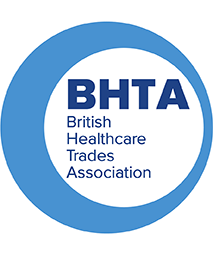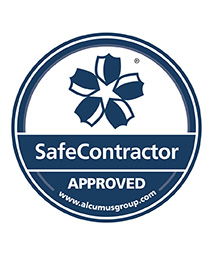Pressure ulcers are damage caused by pressure and / or shear.
What are the common sites for pressure ulceration?
The areas that are particularly prone to pressure sores are those that cover the bony areas such as: 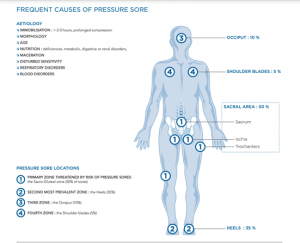
- Heels
- Ankles
- Buttocks
- Shoulders
- Spine
- Backs or sides of the knees
- Toes and feet
- Back of the head (occiput)
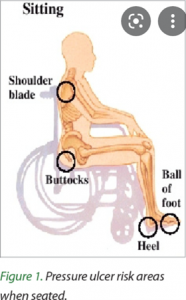
When describing where the tissue damage has occurred on the buttocks, clinical staff should ensure that the correct terminology is used to accurately describe the location – the following diagram may help.
- Sacrum (see below)
- Coccyx (Tailbone)
- Trochanter (Hipbones)
- Gluteal (buttock)
- Ischial (often incorrectly described as lower buttock or upper thigh, but usually caused by unrelieved pressure from sitting)
- Gluteal cleft (often see moisture damage rather than pressure damage in this area)
- Perianal / perineal area (often due to moisture eg. From urine or faeces – rather than pressure)
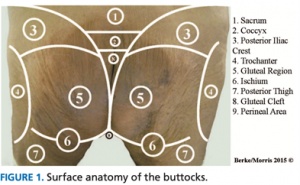
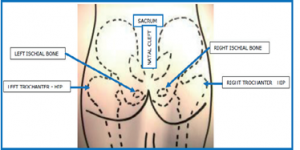
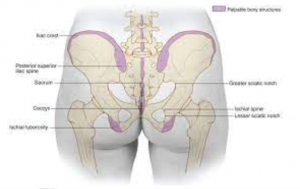
Effective preventive measures reduce the risk of pressure ulcers developing.
Preventive measures should include:
- Frequently assessing skin for early signs of damage
- Use a high-quality static pressure-reducing mattress and cushion. Or, for those who require a higher level of protection use an alternating pressure air mattress and cushion
- Keep the person moving as much as possible. Even small changes in position are really important to reduce risk of damage
- Use barrier creams and appropriate containment products (eg. Continence pads) for those with bladder or bowel issues that lead to frequent episodes of wet or soiled skin
- Ensure access to a healthy diet and adequate fluid intake to keep the skin nourished and hydrated
*’Surface Anatomy of Buttocks’ image is taken from the ‘Visual Guide for Accurately Designating the Anatomic Location of Buttocks Lesions’ article.
J Wound Ostomy Continence Nurs. 2016;43(2):148-149. Published by Lippincott Williams & Wilkins
For more information about Harvest Healthcare please click here
For more news please visit our Twitter
Or follow us on LinkedIn

